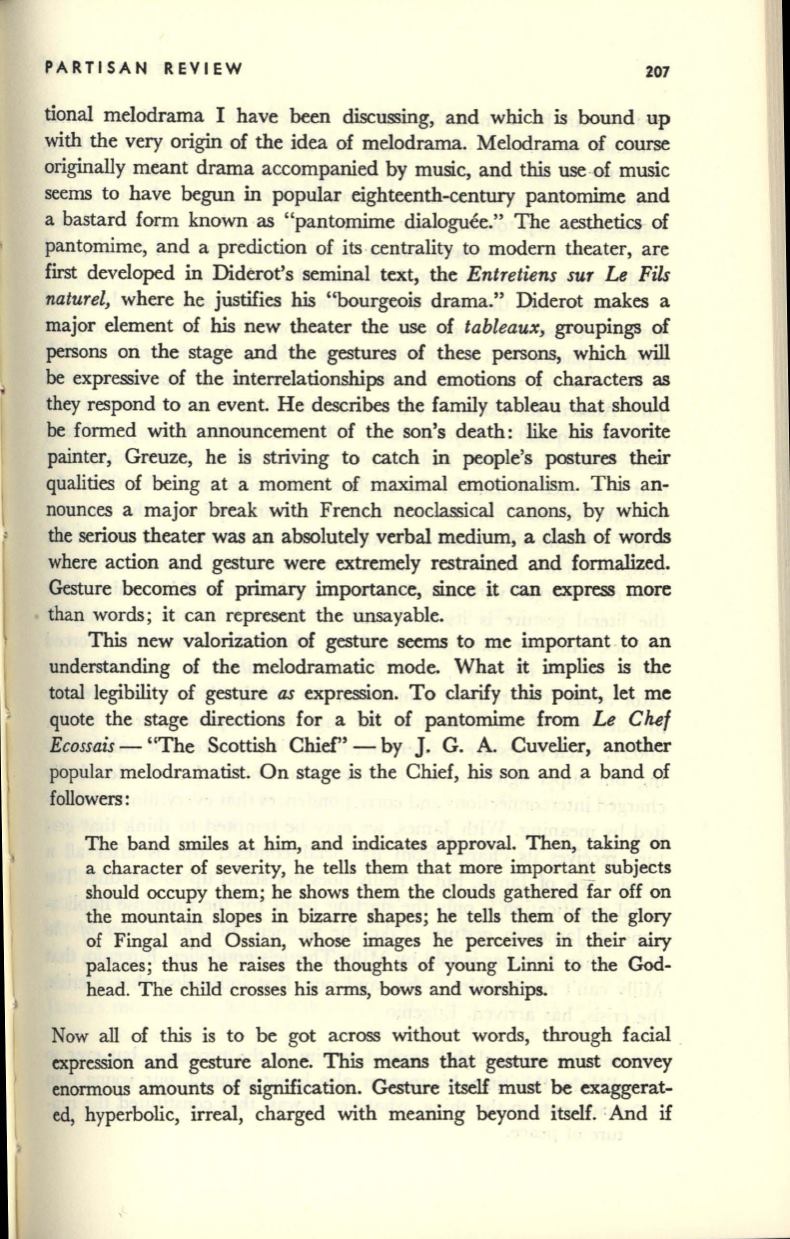
PARTISAN REVIEW
207
tional melodrama I have been discussing, and which is bound up
with the very origin of the idea of melodrama. Melodrama of course
originally meant drama accompanied by music, and this use of music
seems to have begun
in
popular eighteenth-century pantomime and
a bastard form known as "pantomime dialoguee." The aesthetics of
pantomime, and a prediction of its centrality to modern theater, are
first
developed in Diderot's seminal text, the
Entretiens sur Le Fils
naturel,
where he justifies his "bourgeois drama." Diderot makes a
major element of his new theater the use of
tableaux,
groupings of
persons on the stage and the gestures of these persons, which
will
be expressive of the interrelationships and emotions of characters as
they respond to an event. He describes the family tableau that should
be formed with announcement of the son's death: like his favorite
painter, Greuze, he
is
striving to catch in people's postures their
qualities of being at a moment of maximal emotionalism. This an–
nounces a major break with French neoclassical canons, by which
the serious theater was an absolutely verbal medium, a clash of words
where action and gesture were extremely restrained and formalized.
Gesture becomes of primary importance, since it can express more
than words ;
it
can represent the unsayable.
This new valorization of gesture seems to me important to an
understanding of the melodramatic mode. What it implies is the
total legibility of gesture
as
expression. To clarify this point, let me
quote the stage directions for a bit of pantomime from
Le Chef
Ecossais
-
"The Scottish Chief" - by
J.
G.
A.
Cuvelier, another
popular melodramatist. On stage is the Chief, his son and a band of
followers:
The band smiles at him, and indicates approval. Then, taking on
a character of severity, he tells them that more important subjects
should occupy them; he shows them the clouds gathered far off on
the mountain slopes in bizarre shapes; he tells them of the glory
of Fingal and Ossian, whose images he perceives in their airy
palaces; thus he raises the thoughts of young Linni to the
God–
head. The child crosses his arms, bows and worships.
Now all of this is to be got across without words, through facial
expression and gesture alone. This means that gesture must convey
enormous amounts of signification. Gesture itself must
be
exaggerat–
ed, hyperbolic, irreal, charged with meaning beyond itself.
~
And
if


